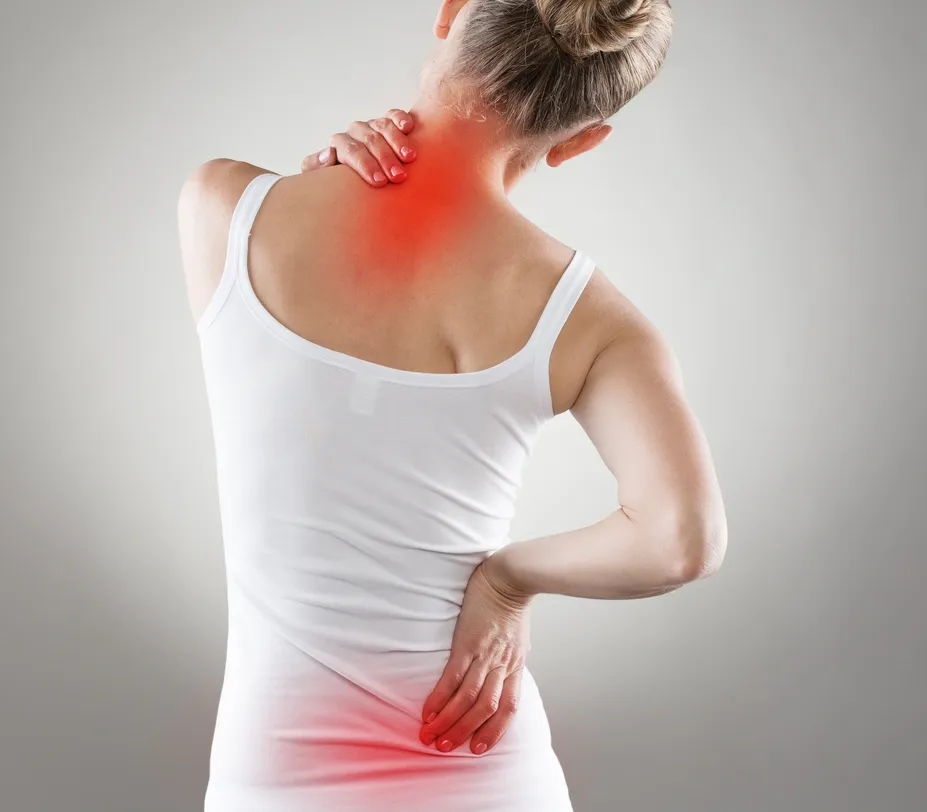When we have pain, does it always mean we have tissue damage?
The Oxford dictionary definition of pain (physical suffering or discomfort caused by illness or injury) and the biomedical model of pain from the 1960s (pain is a direct result of tissue damage, with a linear relationship between the severity of the injury and the intensity of pain experienced) would have us believe that there is a direct and predictable relationship between tissue damage and pain. While, in the case of a broken bone or a sprained ankle, this would appear to be correct, this model fails to explain other instances of pain.
Why do we sometimes continue to hurt after an injury has healed?
Why does a paper cut hurt so much with so little injury? Why do our arms hurt when we try to hold something overhead for longer than a few minutes? Surely, there’s no injury when holding our arms in the air! Why do we continue to experience pain after an injury has healed? By this model, if harm equals hurt, then the hurt should be gone once healing is complete, right? In fact, there have been multiple clinical studies that show that injury does NOT equal pain.
So, what exactly is at play? What were we missing? Why can two people experience the same injury differently? This is exactly what Dr. George Engel asked himself.
A New Model of Pain
In 1977, Dr Engel laid forth an alternate explanation. He stated that the biomedical model of pain is not enough to explain pain. In addition to the biological, we should consider psychological and social factors. This was the beginning of a new model of pain: the biopsychosocial model (biology, psychology and social context all making up context for the experience of pain).
In 1978 (whether in recognition of or in parallel to Dr. Engel’s proposition), the IASP (International Association for the Study of Pain) introduced a new definition: “An unpleasant sensory and emotional experience associated with actual or potential tissue damage, or described in terms of such damage”. While the inclusion of ‘potential damage’ left room for psychological factors in pain perception, it still anchored the concept of pain to the presence of damage. This definition fell short of fully explaining instances of pain without tissue damage.
A Pioneer in Pain Science
Today’s pioneer in pain science, Dr. Lorimer Moseley, clarifies that the biopsychosocial model does not reject the role of damage as a driver of pain. In fact, history of injury can be the driver of future pain. That is to say that the brain will create pain signals in the absence of injury, as a protective mechanism. He describes this as a ‘protectometer’, i.e. pain created by the brain to prevent injury!
This would begin to explain why we can experience pain after we’ve healed, or before there is any injury, or even why some people might say ouch in anticipation of pain. Let us be clear: just because pain is created by the brain, does not mean it is not real. Pain is always real.
A New Definition of Pain
As of July 16, 2020 the IASP announced the following new definition of pain, comprised of a modified base definition plus six key notes for clarity:
“An unpleasant sensory and emotional experience associated with, or resembling that associated with, actual or potential tissue damage”:
- Pain is always a personal experience that is influenced to varying degrees by biological, psychological, and social factors.
- Pain and nociception are different phenomena. Pain cannot be inferred solely from activity in sensory neurons.
- Through their life experiences, individuals learn the concept of pain.
- A person’s report of an experience as pain should be respected.
- Although pain usually serves an adaptive role, it may have adverse effects on function and social and psychological well-being.
- Verbal description is only one of several behaviours to express pain; inability to communicate does not negate the possibility that a human or a nonhuman animal experiences pain.
So how does this help us?
Understanding that our brain sends pain signals as a protective mechanism can be reassuring—you are not broken! Recognizing that pain doesn’t always indicate damage can support progress in recovering from chronic pain. Knowing that pain is a learned concept also reminds us that we can adapt and learn to reduce it. It’s crucial that medical professionals respect our pain descriptions, as validation helps us move beyond pain towards healing. Remember, even if pain is generated by the brain, it’s not just in your head—pain is real.
Always consult a professional who understands these concepts, and don’t hesitate to advocate for yourself if you feel unheard.
Until next time… ~ breathe ~ move ~ unwind ~





